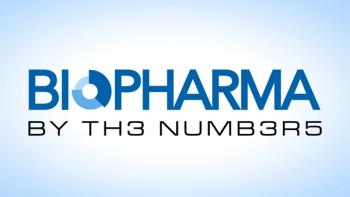
AstraZeneca and MRC form Landmark Collaboration
In an initiative that could signal a new era in private?public partnerships, AstraZeneca will make 22 compounds available for free to medical researchers next year for projects funded by the United Kingdom?s (UK) Medical Research Council (MRC).
In an initiative that could signal a new era in private–public partnerships, AstraZeneca will make 22 compounds available for free to medical researchers next year for projects funded by the United Kingdom’s (UK) Medical Research Council (MRC). The collaboration is yet another boost to UK research and acknowledges the long, complex, and expensive process of drug development by giving UK researchers access to compounds and funds that will allow studies to explore new treatment opportunities through better understanding of disease mechanisms. The MRC, which has fostered 29 Nobel Prize winners, has supported high-quality science for 100 years and is active several disease areas.
“Innovative collaborations are playing a crucial role in finding ways to unlock the potential of new treatments,” said David Brennan, AstraZeneca’s CEO, in a
As part of the collaboration, MRC is requesting research proposals from across the UK. A total of £10 million ($15.6 million) will be awarded to the projects judged to best use the AstraZeneca-developed compounds. Notably, these projects must not directly contribute to AstraZeneca’s active programs to secure the funding.
“The MRC is delighted to be partnering [with] AstraZeneca in this exciting new approach towards understanding disease mechanisms in humans and thereby speeding the development of new treatments,” said Sir John Savill, MRC’s chief executive, in the press release. “The initiative marks a new era in medical discovery, open innovation and public-private collaboration.”
Though IP generated will vary from project to project, AstraZeneca will retain rights over the chemical composition of the compounds, and academic institutions will own any new research findings. New research produced by the collaboration will be made available to the broader scientific community.
In an initiative that could signal a new era in private–public partnerships, AstraZeneca will make 22 compounds available for free to medical researchers next year for projects funded by the United Kingdom’s (UK) Medical Research Council (MRC). The collaboration is yet another boost to UK research and acknowledges the long, complex, and expensive process of drug development by giving UK researchers access to compounds and funds that will allow studies to explore new treatment opportunities through better understanding of disease mechanisms. The MRC, which has fostered 29 Nobel Prize winners, has supported high-quality science for 100 years and is active several disease areas.
“Innovative collaborations are playing a crucial role in finding ways to unlock the potential of new treatments,” said David Brennan, AstraZeneca’s CEO, in a
As part of the collaboration, MRC is requesting research proposals from across the UK. A total of £10 million ($15.6 million) will be awarded to the projects judged to best use the AstraZeneca-developed compounds. Notably, these projects must not directly contribute to AstraZeneca’s active programs to secure the funding.
“The MRC is delighted to be partnering [with] AstraZeneca in this exciting new approach towards understanding disease mechanisms in humans and thereby speeding the development of new treatments,” said Sir John Savill, MRC’s chief executive, in the press release. “The initiative marks a new era in medical discovery, open innovation and public-private collaboration.”
Though IP generated will vary from project to project, AstraZeneca will retain rights over the chemical composition of the compounds, and academic institutions will own any new research findings. New research produced by the collaboration will be made available to the broader scientific community.
Newsletter
Stay at the forefront of biopharmaceutical innovation—subscribe to BioPharm International for expert insights on drug development, manufacturing, compliance, and more.





